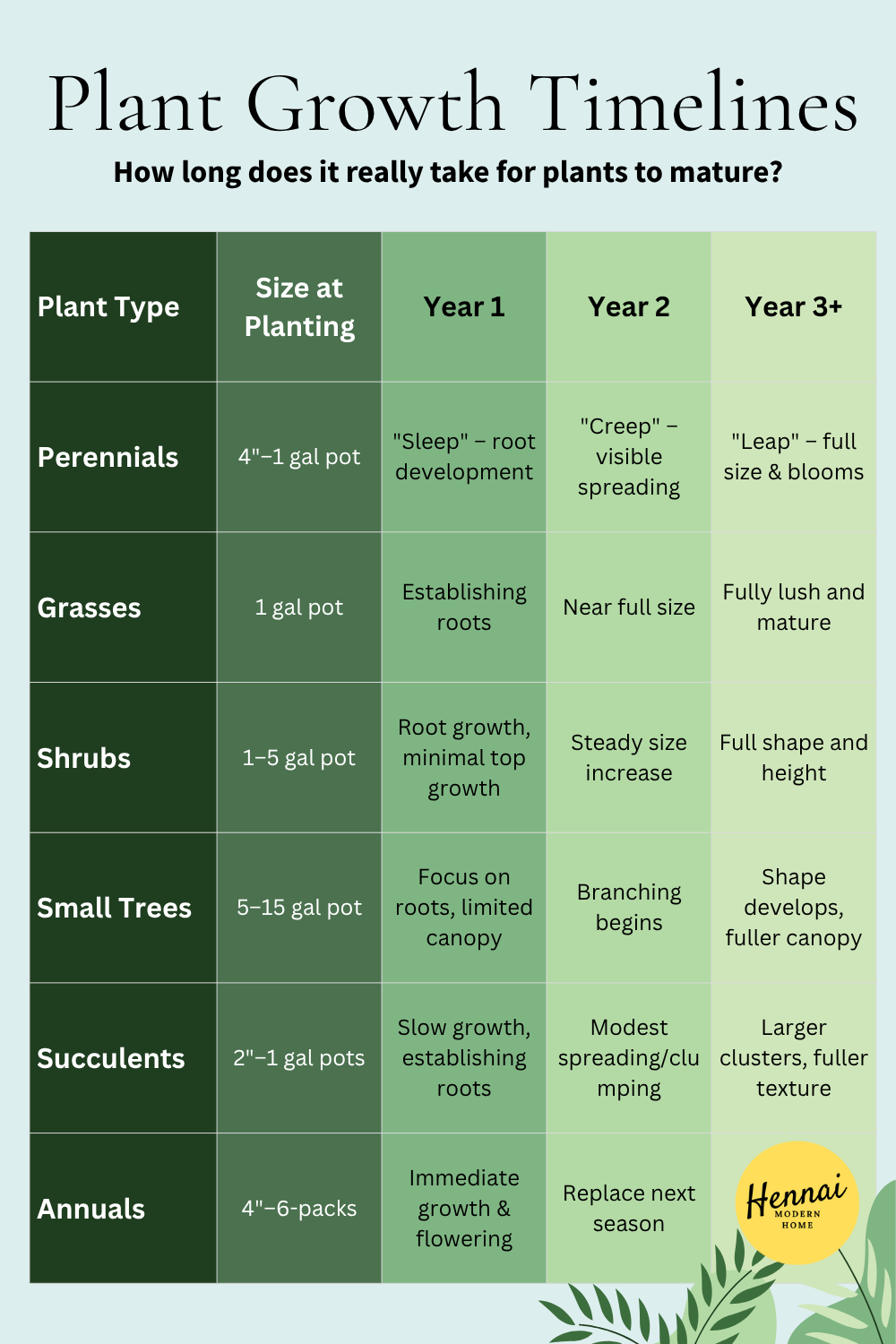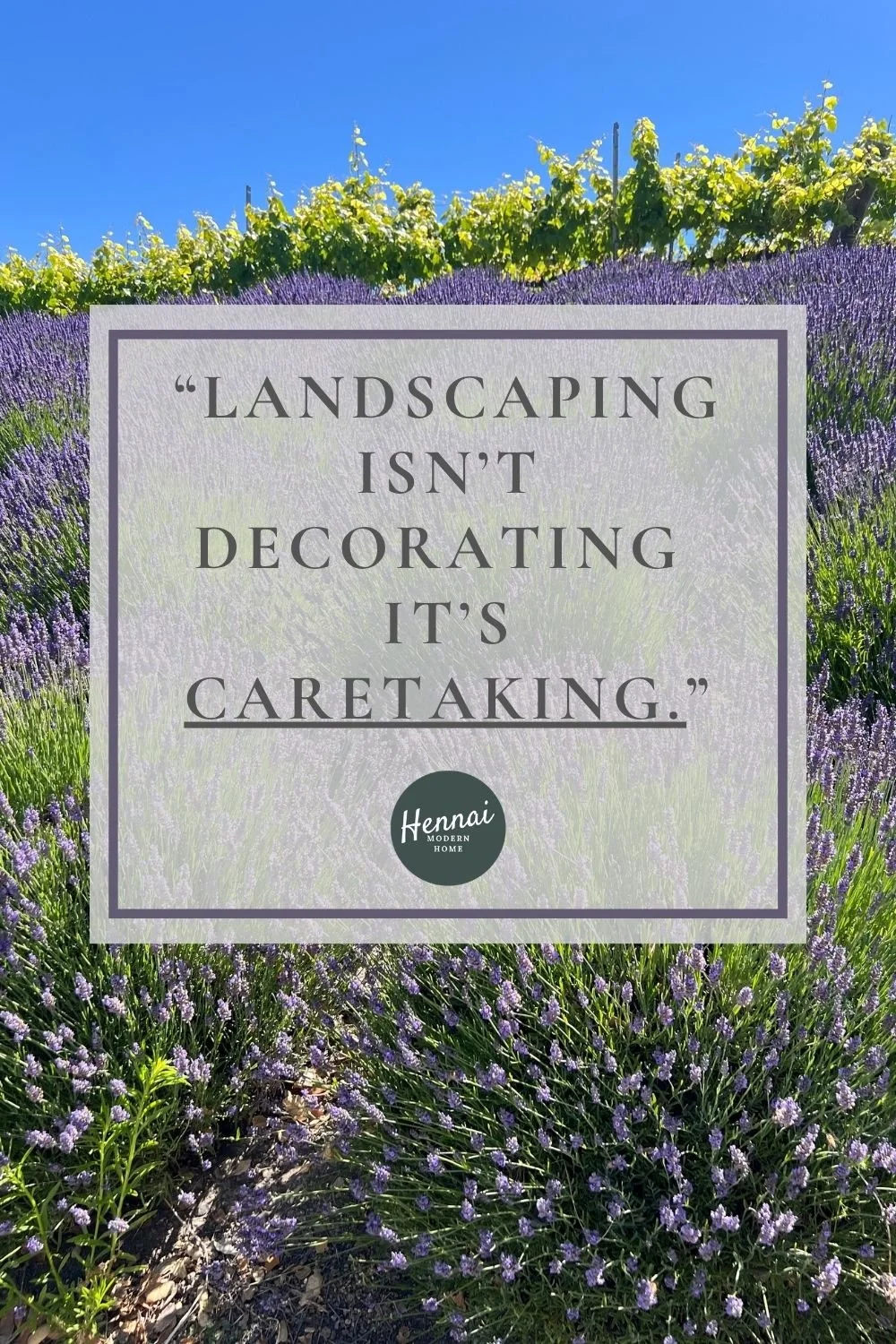Don’t Overplant: A Slower, Smarter Approach to Landscaping
How planting smaller plants and giving them room to grow leads to healthier, more beautiful gardens
Instant Landscaping Looks Good—Until It Doesn’t
Ever notice how a yard can go from “meh” to magazine-ready overnight—usually right before a house goes on the market? Fresh mulch, fully grown shrubs, oversized perennials jammed in side by side. It looks lush in the listing photos, but give it three months… and the cracks start to show.
These quick landscaping makeovers are built for curb appeal, not for long-term success. Plants struggle to adjust, outgrow their space, or fail altogether due to poor root systems and overcrowding. The result? A garden that looked great on day one—but turns into a tangled mess or a high-maintenance headache soon after.
This pressure to have a “finished” yard immediately is a product of our fast-fix culture. But when it comes to gardening, slow and steady really does win the race.
What Happens When You Overplant?
You head to the nursery with good intentions. But standing among rows of $3 plants in 4-inch pots, it’s tempting to overdo it. Full-size plants are expensive, and there’s a natural desire to fill every gap right now.
But here’s the problem: those tiny plants? They’re going to grow—a lot. Most double or triple in size within just a few years. When planted too close together:
They compete for water, light, and nutrients
Airflow is restricted, increasing the risk of mildew and disease
Roots become crowded, which stunts growth or leads to rot
You spend more time pruning or removing plants that outgrow their space
In short: your landscaping gets out of control, fast.
Why I Use Smaller Plants—and Why You Should Too
Every so often, while I’m planting a new bed or updating a front yard, someone will ask: “When will the plants get bigger?”
It’s a totally fair question—usually asked with genuine curiosity. But I’ll be honest: it sometimes hits a nerve. Even when it’s well-meaning, it can feel like a subtle judgment, like I’m cutting corners or not trying hard enough to deliver a “finished” look. In a world that praises instant transformations and curb appeal in a weekend, planting something that looks underwhelming at first can make you feel like you’re doing it wrong.
But here’s the thing: that space? That breathing room? It’s not an oversight. It’s not laziness. It’s intentional.
Choosing smaller plants and spacing them thoughtfully isn’t about being cheap—it’s about creating a landscape that’s healthy, low-maintenance, and actually sustainable. I’m designing with the plant’s future in mind—not just today’s photo.
Most people haven’t been taught how long it takes for plants to reach their mature size. Or that crowding them now means stunting their growth later. The truth is, when you overplant for that “full” look right away, you’re almost guaranteed to be digging things up or cutting them back within a year or two. It’s expensive, exhausting, and totally avoidable.
Let’s take a common example: a one-gallon shrub. At first, it might look tiny and lonely. But give it a few seasons, and it could easily grow 3–5 feet wide. That’s not a maybe—that’s standard growth.
Perennials, too, tend to follow that “sleep, creep, leap” rhythm. The first year they focus on root development and hardly move. Year two, they start to spread. By year three, they take off. If you don’t leave them the space to do that? You’ll either be ripping them out or constantly trying to tame them.
So no—choosing smaller plants isn’t just a budget trick. It’s smart gardening. It’s a slower, quieter kind of transformation. And while it might not give you an instant glow-up, it gives you something better: a garden that grows beautifully, naturally, and with a whole lot less stress.
5 Reasons to Plant Smaller Plants (and Be Patient)
1. They’re More Affordable
Smaller plants typically cost 60–75% less than their larger counterparts. You can get more coverage for your money while staying within budget.
2. They Establish Faster
Young plants adapt to your soil conditions more easily. They experience less transplant shock and are more likely to thrive long-term.
3. They Prevent Overcrowding
Planting small means you can space things based on mature size—not what looks “full” today. That saves you from replanting or removing down the road.
4. They’re Easier to Transport and Handle
Lighter pots mean less strain on your back—and often less damage to surrounding plants and structures during install.
5. They Give You a More Natural Look Over Time
Instead of a yard that looks overly manicured or forced, your landscape can evolve gradually—fitting your home, your climate, and your lifestyle beautifully.
BONUS: If one dies you aren’t out a ton of money either
But What About the Empty Space?
Yes, when you plant for maturity—not the moment—you’ll have gaps at first. But that space isn’t wasted. It’s air, light, and time—exactly what your plants need to thrive.
You can fill in temporarily with mulch, wildflower seed, or even low-cost annuals while your perennials and shrubs establish. Just know: a year or two from now, that “empty” space will likely be full.
Designing a Yard That Lasts
If you’re rethinking your front yard or starting a new garden bed, take the time to:
Research mature sizes (not just what fits in the cart)
Space things out, even if it feels too airy
Resist the urge to “finish” everything now
Focus on structure, not just flowers
Trust the process
Your garden isn’t a weekend project. It’s a relationship. It grows over time—and when you design with that in mind, the result is more beautiful, less stressful, and infinitely more rewarding.
Intentional landscaping is about more than aesthetics. It’s about longevity, ecology, and ease. When you slow down and give your plants space to do what they do best, your yard becomes a place of peace—not upkeep.
So go ahead. Plant small. Leave a few gaps. Water, wait, and watch what happens.
Because a garden built over time will always beat a garden rushed into being.








